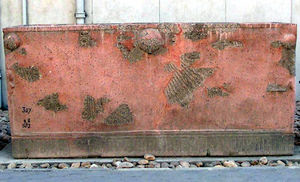The Secretary-General of the Supreme Council of Antiquities Zahi Hawass that DNA analysis may have provided evidence to find the mummy of Pharaoh Al-Tawhid Akhenaten, which was a great mystery in the history of the family (1550 - 1307 BC).
"After more than 120 years of searching for the unknown fate of the mummy of King Amenhotep IV, known as Akhenaten, the founder of the first monotheistic religion in Egypt and the ancient world, there are many indications that he was found," Hawass told a press conference at the Egyptian Museum on Wednesday. On the mummy of this king. "
"In the search for the Tutankhamun family, genetic analysis and gene analysis showed that a mummy in Tomb 55 in the Valley of the Kings is the mummy of King Tutankhamun's father," he said.
"The mummy was thought to belong to a man who died between the ages of 20 and 25. But the results of the research show that he died between 45 and 50 years, the son of Amenhotep III and Queen T. indicating that he himself is Akhenaten."
Hawass said that "Queen T, who earlier predicted that she was the wife of Amenhotep the Third and Umm Akhenaten, was found in the tomb of Amenhotep the second." It was thus decided that Nefertiti could not be the mother of Tutankhamun, who gave birth to his six sisters, .
He pointed out that Queen T was "one of the strongest queens known to ancient Egypt."
"Tutankhamun's mother was also found in the same cemetery and she was also the daughter of Queen T and Amenhotep the Third, but we do not know who is among the daughters of King Amenhotep III," Hawass said.
If the mummy found in Tomb 55 in the Valley of the Kings is the mummy of King Akhenaten, the myth of the relationship with the Prophet Moses ended because the Torah indicates his death in Jordan.
Hawass said that Akhenaten is not a prophet but he is one of the prophets who has not been spoken about, especially since he is the first unified in history, in addition to what he said about paradise, fire, punishment, reward and the relationship with the Creator, not contrary to the monotheistic religions.
Tests by two Egyptian teams, confirmed by two German advisers and eight experts from the specialized magazine Gama, repeated the reasons for the death of the golden king Tutankhamun at a very early age and did not exceed 19 in 1324 BC to "a severe malaria infection," which completely negates the idea of his death. Or assassination.
Hawass said: "The fracture in his leg may be the result of his fall, especially that the results of tests lead us to believe that the lack of blood circulation in bone tissue weakened, and ruled out that the hole skull is due to a killing because this hole was used in embalming to pour liquid inside the skull.
The diagnosis was made after genetic analyzes showed a series of mutations in the Tutankhamun family, including Koehler's disease, which destroys bone cells. The young pharaoh was suffering from a deformity in the feet known as a foot wrap or footstool in which the heel of the foot and fingers are swathed inside.
DNA analyzes revealed three genes associated with parasitic parasites that cause malaria in four mummies, including the mummy belonging to Tutankhamun.
Hawass explained that "what was found in the tomb of Tutankhamun reinforces this hypothesis, including more than 130 sticks, including one that said he made it and a pharmacy for his second life."
There are scenes of Tutankhamun imagining him throwing at the arrows sitting with a stick and walking behind his wife.
"As a result of these reports, we have been able to solve a large part of the family-related puzzles," Hawass told AFP. "We had to discover the mummy of Queen Nefertiti and Mumia, the wife of Tutankhamun, who are still missing."
































